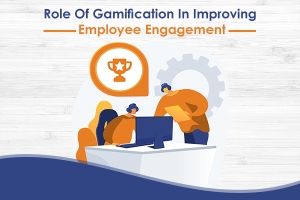
In today’s fast-paced technological world, employee training programs play a vital role in ensuring companies remain competitive and effective. However, traditional training methods often lack engagement and fail to capture employees’ attention for optimal learning. This is where gamification comes in, revolutionizing the way organizations approach employee training by incorporating game mechanics and elements into the learning process.
What is Gamification?
Gamification is the application of game principles and techniques, such as competition, rewards, and challenges, to non-game contexts. It takes advantage of humans’ natural inclination for play and competition, making tasks and activities more enjoyable and engaging. By incorporating elements such as points, leaderboards, levels, and badges, gamification enhances motivation, knowledge retention, and overall learning outcomes.
The Benefits of Gamification in Employee Training
Gamification has gained significant popularity in employee training programs due to its numerous benefits:
1. Increased Engagement and Motivation
Traditional training methods often struggle to keep employees engaged throughout the learning process. Gamification brings an element of fun and excitement, motivating employees to actively participate and complete training modules. By transforming routine tasks into interactive challenges, employees become more motivated, leading to higher levels of engagement and retention of information.
2. Enhanced Learning Retention
Through gamification, employees can experience learning in a more immersive and interactive way. The use of game mechanics, such as quizzes, simulations, and branching narratives, allows employees to apply their knowledge in real-world scenarios. This hands-on approach enhances learning retention as employees experience the consequences of their decisions within a safe environment.
3. Personalized Learning Experience
Gamification enables personalized learning experiences tailored to individual employee needs. By offering different difficulty levels, adaptive content, and personalized feedback, employees can advance at their own pace, ensuring a more customized and effective learning journey. This individualized approach enhances motivation and ensures employees feel supported throughout the training process.
4. Healthy Competition and Collaboration
Gamification introduces friendly competition and collaboration among employees. Leaderboards, badges, and rewards foster a sense of accomplishment and recognition, motivating employees to outperform their peers. Additionally, gamification can promote collaboration by incorporating team-based challenges and multiplayer games, encouraging employees to work together towards common goals. These elements create a positive social learning environment that enhances teamwork and camaraderie among employees.
5. Real-Time Feedback and Progress Tracking
Gamification provides real-time feedback to employees, allowing them to track their progress and identify areas for improvement. Employees receive immediate feedback on their performance, enabling them to adjust and enhance their learning strategies accordingly. Progress tracking also helps managers and trainers identify knowledge gaps and adapt training programs to address specific individual or team needs.
Implementing Gamification in Employee Training Programs
Successfully implementing gamification in employee training programs requires careful planning and execution:
1. Set Clear Objectives
Define the desired outcomes and learning objectives before integrating gamification into training programs. Clearly communicate these objectives to employees to ensure alignment and a common understanding of the goals.
2. Choose Appropriate Gamification Elements
Select game mechanics and elements that align with the training content and desired outcomes. These could include points, badges, levels, leaderboards, quizzes, simulations, and more. Every element should have a purpose and contribute to the overall learning experience.
3. Provide Meaningful Rewards
Design meaningful rewards that incentivize employees and reinforce positive behavior. Rewards can include recognition, virtual or tangible goods, advancement opportunities, or special privileges. Ensure the rewards align with the overall training objectives and resonate with employees.
4. Incorporate Feedback and Progress Tracking
Integrate mechanisms to provide real-time feedback and progress tracking. Customized feedback helps individuals gauge their performance and understand areas that need improvement. Progress tracking enables employees to visualize their learning journey and motivates them to achieve better results.
5. Continuously Monitor and Update
Regularly assess the effectiveness of gamification in employee training programs through data analytics and employee feedback. Analyze engagement levels, knowledge retention rates, and other key metrics to identify areas of improvement. Update and refine the gamification elements to ensure continuous engagement and enhanced learning outcomes.
Conclusion
Gamification has emerged as a powerful tool in revolutionizing employee training programs. By leveraging the principles of play, competition, and rewards, organizations can enhance engagement, motivation, and learning retention. As technology advances, gamification will continue to play a crucial role in shaping the future of training, ensuring employees are better equipped to excel in their roles and drive business success.


